

The Pipe Organs have been in existence since more than 12 centuries in churches and schools in Europe ,but the Free Reed Organ , the group to which the Harmonium belongs , came much later. The Chinese blowing instrument, “The Sheng“, first introduced free reeds to Europe in the 18th century. It inspired early instruments like the Physharmonica and the Seraphine . However , the credit for designing the first Harmonium goes to the Frenchman Alexandre Debain, who patented it in 1840. This was a foot–pumped device somewhat similar to the Organ seen in Marathi stage musicals even today. This instrument, being far more compact and economical than the huge Pipe organs, soon became very popular among western musicians.

The Sheng
Many composers even composed special pieces for the Harmonium
The British brought this instrument to India to be played in their churches and homes. It was Mr Dwarkanath Ghosh (1847-1928), grandfather of Harmonium and Tabla maestro Jnan Prakash Ghosh, who converted this foot pumped version into a hand-pumped one in 1875. It was much more compact and could be played in sitting down position. He manufactured and sold this as the “Dwarkin Harmonium” which soon became very popular among the masses of India , especially Bengal. Though the musicologists initially looked at it suspiciously due to its foreign origin , it soon gained acceptance when stalwarts like Govindrao Tembe (1881-1955) introduced it in their classical concerts. The Harmonium even started replacing the Sarangi as an accompanying instrument for vocalists.
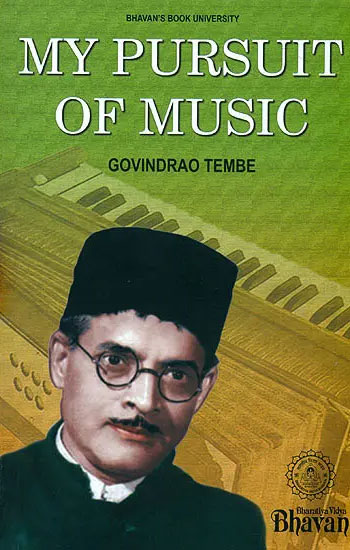
Govindrao Tembe
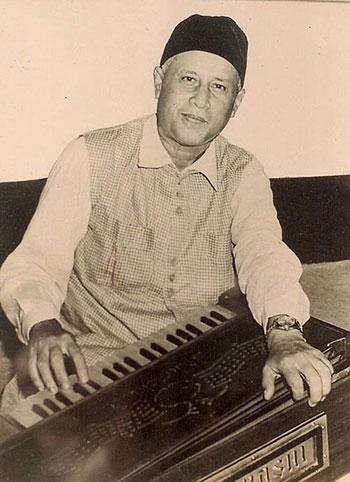
Sangeetacharya Montu Banerjee
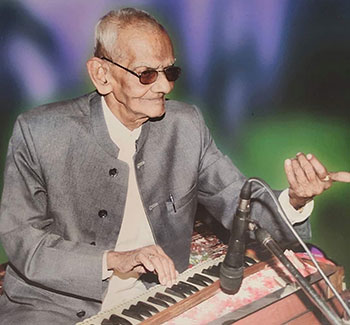
Pt Rambhau Bijapure
The partitioning of Bengal in 1905 by the British triggered the “Swadeshi Movement”, where all things connected with British were rejected. The Harmonium, though of European origin, got unfortunately caught in it. The anti- Harmonium brigade, who were against the Harmonium due to its inability to provide microtones as well as glides (meend), took this opportunity to step up their demand. Apparently , Ravindranath Tagore, who initially welcomed the harmonium, felt later that it was most unsuitable for Indian music. At first he banned it from Shantiniketan and later wrote to All India Radio Kolkata bureau chief Asoke Kumar Sen in January 1940 stating that “You will be doing a great service to the cause of Indian music if you can get it (the Harmonium) abandoned from the studio of All India Radio“ Even Pandit Nehru apparently said “I simply cannot tolerate that instrument“ Thus finally the Harmonium was banned on All India Radio on 1st March 1940. The ban persisted even after Independence due to the decision of Information and Broadcasting Minister B V Keskar ( a disciple of V N Bhatkhande ) Due to the efforts of many Harmonium players and musicians, the ban got revoked in 1972. Harmonium players like Rambhau Bijapure and Montu Banerjee gave some solo recitals on AIR. However in 1974 again solo performances were banned and only Harmonium accompaniment was allowed.
It was only recently on 1st April 2018 that Dr Ravindra Katoti was invited to perform in the National programme on All India Radio. Taking a reverse turn again, theres a move to phase out Harmonium from the Golden Temple as well as other Gurudwaras. Those familiar with the situation however feel it will be impossible to replace the Harmonium with more traditional stringed instruments. Almost 99 % of singers in Gurudwaras use the Harmonium and it won’t be possible for all of them to learn the stringed instrument at short notice.
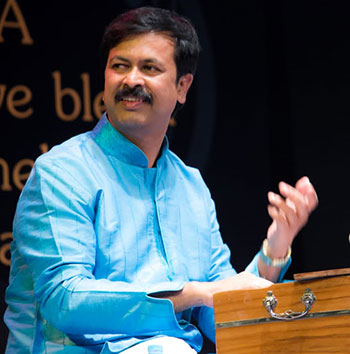
Dr Ravindra Katoti
The popularity of this instrument is growing so much that it has now entered into Carnatic music also .
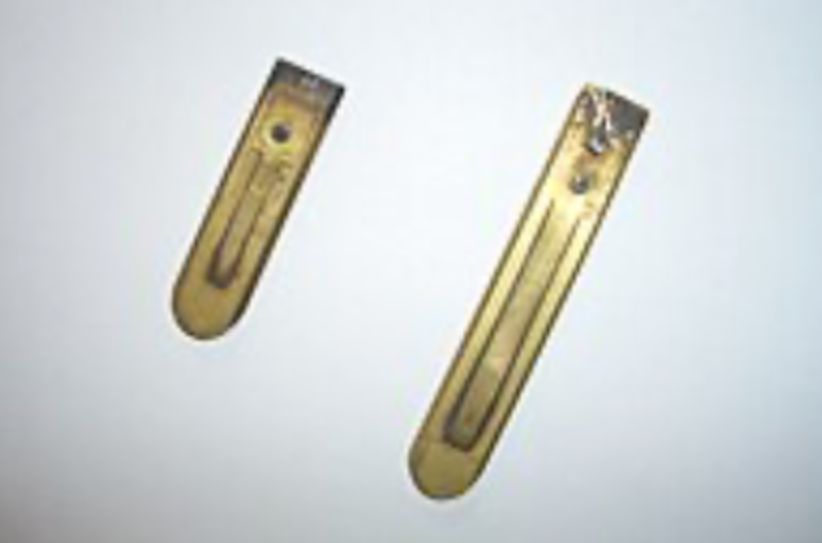
The Reeds
Although practically everyone has tried their hand at “playing” the ubiquitous harmonium, most are quite unaware about its working. A Harmonium is described technically as a ”Free Reed Aerophone with Keyboard” Thus there are three main components – The source of sound (The Reed), the source of air (The Bellows) and the controlling mechanism (The Keyboard) . The reeds are thin strips of brass riveted to a metal frame with close tolerance. Air under pressure causes these strips to oscillate thus producing the sound. The physical characteristics of the strip such as its mass, length, cross-sectional area and stiffness determine the pitch of the musical note. The reeds are in sets called as reed banks , which are fixed on a wooden board with matching holes , called a reed board . Good quality harmoniums have two or three sets of reed banks which produces a rich sound . Each reed bank is in a different compartment and the operator can control which set will receive the airflow. The air flow is created by a pair of Bellows- one external (visible) and the other internal (not visible) . The external is the feeder bellows controlled by the operator’s hand while the internal is the reservoir bellows. This arrangement helps to produce a gentle but steady flow of air towards the reeds. The keyboard is what the player uses to determine which reed will receive the airflow and the skill of the harmonium player is largely based on how adroitly he or she fingers the keyboard.
The sound of the harmonium stops abruptly whenever we lift our finger from the keyboard because the airflow stops. In order to have a little sustained sound Pandit Manohar Chimote attached a harp like device on top of the harmonium. The strings of this device resonated with the sound coming from the reed and thus it continued for a short while even after the reed stopped vibrating. Pandit Chimote called this version of the harmonium as the “Samvadini”. However the name was so apt and “Indian” sounding that artists, all over, started referring to the standard harmonium as samvadini.

Pt Manohar Chimote
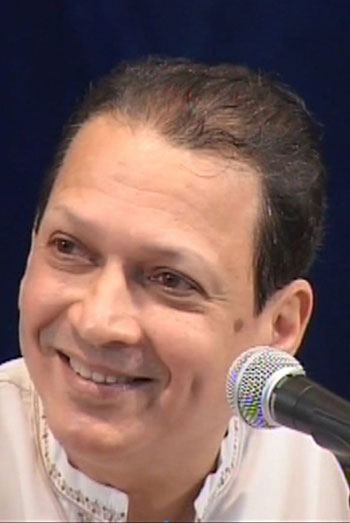
Dr Vidyadhar Oke
Perfect tuning of the Harmonium is the icing on the cake. The topic of tuning has been dealt in great detail by Dr Vidyadhar Oke in his website “The 22 Shruti Harmonium“ . Various experts in tuning have their own opinion about what constitutes perfect tuning.
There is the “Equitempered tuning“ which is commonly seen in most instruments . Here the greatest advantage is that you can play such a harmonium in any scale like C ( Safed 1 ), D #( Kali 2 ), G# ( Kali4 ) etc , and it will sound “reasonably“ in tune. Another way of saying this is that it won’t be more out of tune in any one scale as compared to any other scale ! However when we play with a well tuned tanpura in the background all notes except the “ Sa “ will sound out of tune, especially Gandhar and Dhaivat.
Then there is the Natural scale (Gandhar tuning) where a particular note ( eg. F) is chosen as Sa Then the tuning is done in the form of three triads – Sa Ga Pa , Ma Dha, Sa ( Taar saptak ) and Pa Ni Re Here in every triad the second and third note are at a ratio of 1.25 and 1.5 respectively to the first note. This sounds quite melodious even when played with a tanpura , provided it is played in the pre determined scale (eg. F) However in any other scale it will sound much worse than the equitempered harmonium. Thus any person who wishes to play in different scales ( maybe as accompaniment to singers singing in varying scales ) will always prefer an equitempered harmonium to a Naturally tuned harmonium.
Finally came the 22 shruti tuned Harmonium because different ragas may need a slightly different pitch for any swar ( eg. The komal Rishabh) instead of a fixed standard pitch. Dr Oke has elaborated this aspect in detail and it is worth a read for any serious student of the Harmonium.